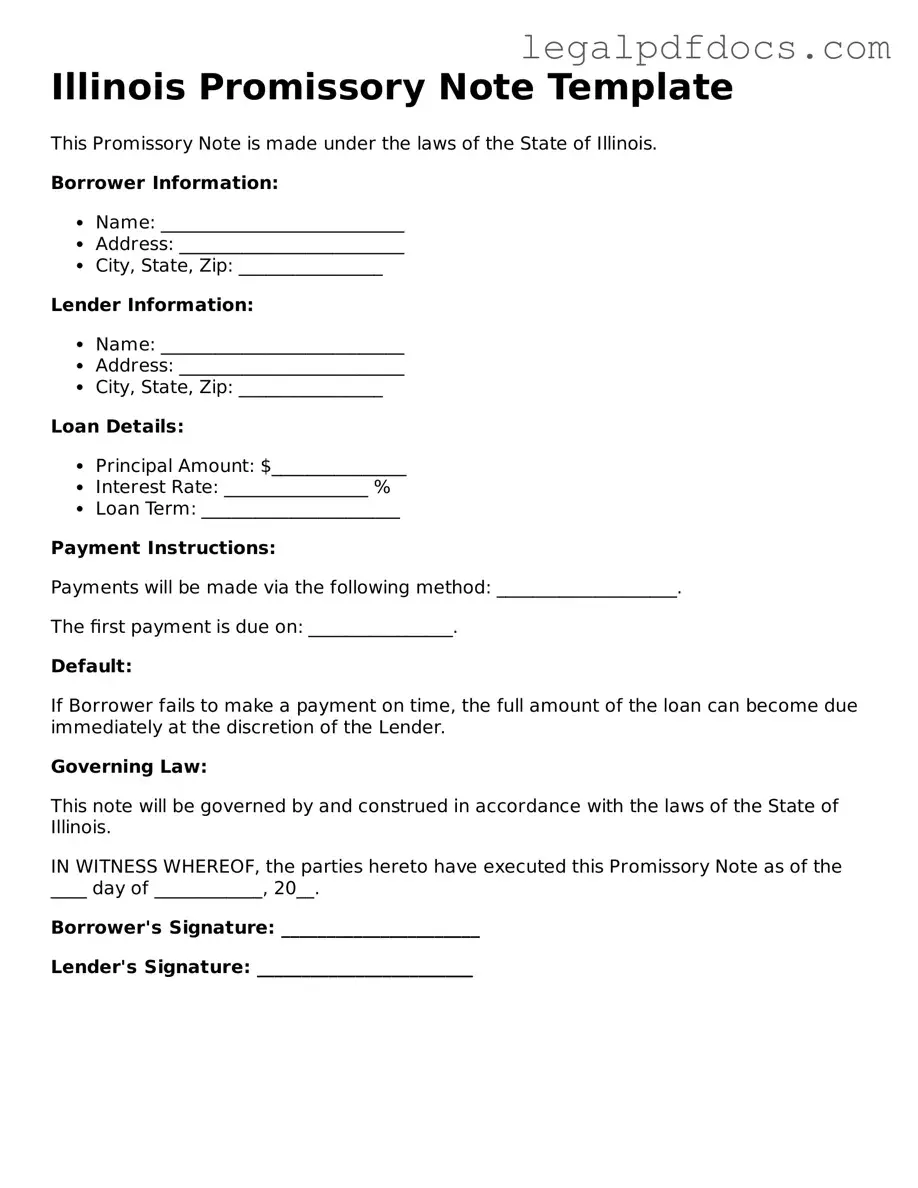Official Promissory Note Form for Illinois
A Promissory Note is a written promise to pay a specified amount of money to a designated person or entity at a future date or on demand. In Illinois, this legal document outlines the terms of the loan, including interest rates and repayment schedules. Understanding the details of this form is essential for both lenders and borrowers to ensure clarity and protection in financial transactions.
Ready to fill out the Illinois Promissory Note form? Click the button below to get started!
Open Promissory Note Editor Here
